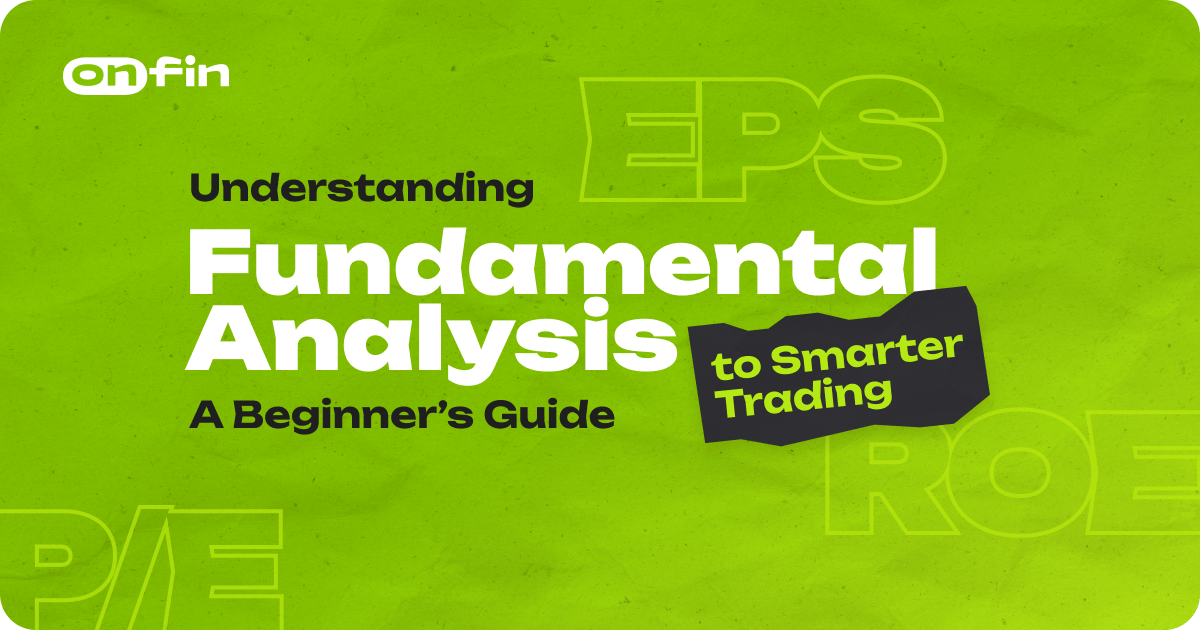Fundamental analysis is one of the most important skills a trader or investor can develop. At its core, it’s about figuring out what a company is really worth and whether its current market price reflects that value. This approach isn’t about guessing what will happen tomorrow—it’s about understanding the true condition of a business and making smart, informed decisions.
Let’s explore how it works, why it matters, and how you can begin using it to improve your trading skills—even if you’re just getting started.
What Is Fundamental Analysis?
Fundamental analysis means evaluating the financial health and business performance of a company. Instead of watching stock price movements, you look at real business data: revenues, expenses, profits, growth potential, debts, and more. The goal is to decide if a company’s stock is undervalued or overvalued compared to its actual worth.
It’s like examining the engine of a car before buying it, rather than just judging by how shiny the paint is.
This kind of analysis is used not just for stocks but also in other financial markets like forex and commodities. In each case, the trader is trying to understand what drives value and how to measure it.
Why Do Traders Use It?
Because price alone doesn’t tell the full story.
Let’s say a stock is trading at $100. Is that a bargain—or overpriced? Only by digging into the company’s earnings, debts, revenue trends, and future prospects can you answer that.
Professional traders and long-term investors use fundamental analysis to spot opportunities before the broader market catches on. For example, they might identify a company with solid financials that’s temporarily underpriced due to negative news. Once the market adjusts, the trader profits.
The Core Idea: Intrinsic Value vs Market Price
At the heart of fundamental analysis is one concept: intrinsic value.

This is the real, estimated worth of a company, based on its business fundamentals. The market price, on the other hand, is simply what people are willing to pay for it today. If a stock’s intrinsic value is higher than its market price, it may be a good buy. If it’s lower, the stock might be overvalued.
How to Get Started: Key Areas to Focus On
1. Company Earnings
Earnings show how much money a company actually makes. This is usually reported in quarterly earnings reports. High and growing earnings often signal a healthy, expanding business. Declining earnings could mean trouble ahead.
New traders can start by comparing this year’s earnings with last year’s. Is the company growing? Are profits rising?
A professional might go deeper by comparing earnings across multiple quarters and analyzing the reasons behind any changes—like new product launches, cost reductions, or market expansion.
2. Financial Ratios
Once you understand earnings, the next step is to look at ratios. These help you measure how well the company is performing relative to its size, revenue, and assets.
Earnings per Share (EPS) tells you how much of the company’s profit belongs to each share. Higher EPS often means a more valuable stock.
Price-to-Earnings (P/E) Ratio compares the stock price to its earnings. A very high P/E might mean a stock is overpriced—or that investors expect big growth.
Return on Equity (ROE) shows how efficiently a company is using its investors’ money to generate profit.
These numbers are like reading a company’s health report. You don’t need to be a math expert. Most of these figures are available on public finance websites and are easy to understand with practice.
3. Revenue and Sales Trends
Revenue is the total money a company brings in before expenses. If revenue is growing steadily, it means the company is selling more or entering new markets.
However, rising revenue without rising profit might suggest inefficiency or rising costs. This is why it’s important to look at both top-line (revenue) and bottom-line (net profit) figures together.
Real Example: How Professionals Use It
Imagine a professional investor analyzing two tech companies. Both are selling at similar prices. But Company A has declining earnings, increasing debt, and a shrinking market share. Company B, on the other hand, is showing rising sales, expanding margins, and a clear plan for global expansion.
Even if both stocks look similar on the surface, a fundamental analyst would clearly see that Company B has more long-term potential.
Professionals might even attend earnings calls or read investor presentations to spot risks or hidden advantages that the market hasn’t noticed yet.
Practical Tips for Getting Started
You don’t need advanced tools to begin. Free websites like Yahoo Finance or MarketWatch offer detailed data on public companies.
Here’s how beginners often start:
- Choose one company you understand
Pick a business you’re familiar with—like a brand you buy from often. It’s easier to grasp the numbers when you know the product or service. - Study its income statement
Look at revenue, operating income, and net profit. Try to understand where the money comes from—and where it goes. - Track key financial ratios
Note EPS, P/E, ROE, and debt ratios over several quarters to see how the company is performing over time. - Follow quarterly earnings reports
These provide real-time updates on how the business is doing and help develop the habit of regularly checking in on financial performance.
Learning by doing—starting small and reviewing real data—helps you gradually gain confidence and insight.
Combining with Other Strategies
While some traders use fundamental analysis on its own, many combine it with technical analysis—which focuses on chart patterns and price trends. For example, a trader might identify a strong company through fundamentals, then wait for a price pullback before buying based on technical signals.
This combo helps balance long-term value with short-term market timing.
Tools You Might Need
You don’t need expensive software to start. Beginner traders can use free platforms like Yahoo Finance, Google Finance, or MarketWatch. These offer earnings reports, financial ratios, and company news in one place.
Spreadsheets can also be helpful. Entering data manually might feel slow, but it’s a great way to learn how everything connects. Over time, you’ll start recognizing patterns and spotting red flags or hidden gems more easily.
Final Thoughts
Fundamental analysis helps traders look past the noise of daily price changes and understand the deeper story behind a stock. It gives you a logical, informed way to make decisions—and helps reduce emotional or impulsive trading.
It takes some time to learn. But with practice, even beginners can build a strong foundation and make smarter, more confident trades. The key is to stay curious, think critically, and always dig deeper than the surface price.







